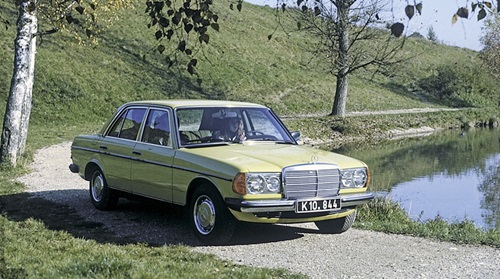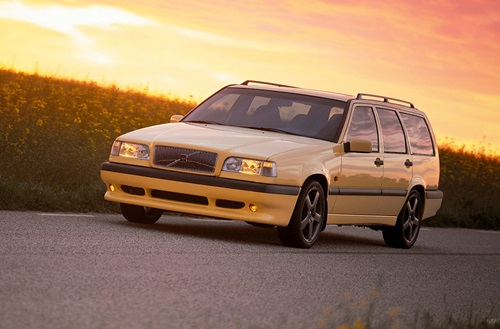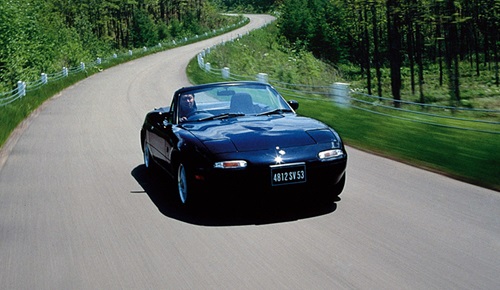As the new year ticks around, so another tranche of favourite old cars become, officially in the eyes of the taxman, classics (or ‘vintage’ to give the official, but slightly incorrect designation — in theory, vintage cars refers specifically to those made before the Second World War, but let’s not start splitting hairs this early in the near year, eh?).
It means that any car made and registered before 1994 is now eligible for classic car tax and insurance. There are significant savings to be made, too — classic tax is just €56 per year, or €26 if we’re talking about a classic motorbike.
Insurance is a little trickier, as is so often the case in Ireland. Most insurers won’t cover a classic car for year-round, 365-day use, and will usually require you to have another, non-classic car, insured and taxed for use as your daily driver. Many will also impose mileage limits, and some will require you to be a member of a classic car club or society, but for all those restrictions there are certainly significant savings to be made on the cost of cover.
Daily drive
Can you actually, really use a classic car as your daily, or if not quite daily then at least frequent, motor? It’s certainly possible, but it requires careful purchasing, and a readiness to lavish mechanical care and attention on whatever you buy.

In years gone by, there would have been only two brands to buy if you were seriously thinking about using a classic car as an everyday machine — Mercedes and Porsche. Pre-1990s Mercedes and Porsche models were built, to coin a phrase, like tanks and as long as rust could be kept at bay, then their mechanical bits and pieces would usually be robust enough to keep happily running long past their original intended lifespan.
That advice still holds true today, of course. A beautiful W123 E-Class Mercedes, built from 1975 to 1986, is still an eminently sensible everyday car, if looked after while a 1970s Porsche 911 can provide proper sports car thrills, but is far less mechanically fussy than its Italian or British contemporaries. The parts and spares back up for older Mercedes and Porsche models is also second-to-none, even if it can be savagely expensive at times.
Are there other options, though?
There most certainly are. Volvos have long been legendary for providing solid mechanical dependability, and it’s no coincidence that the first known car to rack up one-million miles was a Volvo — a 1960s P1800 coupe. The fact that anything pre-1994 is now a bona-fide classic means that one of the best Volvos ever is now up for classic grabs — the 850.

The 850 was Volvo’s first front-wheel drive model, and while it kept largely to the old ‘boxy but good’ styling of its predecessors, it was also sleeker and much more modern looking than the brick-like 240 and 245 that it replaced. It was also good to drive (occasionally harsh ride aside) and came with a high-performance T5 model that put the wind up BMWs.
You need to check for rust around the rear bumper mounts, and keep an eye out for sagging suspension. The engine’s oil system and cooling need careful checking too (run away from anything that smokes) but other than that, these are robust cars that are still entirely practical to run and drive today — and safer than most other classic choices, of course. As with all such classics, they’re thin on the ground in Ireland, but we did find a high-performance T5 saloon for sale for €19,990. Sadly, it’s a 1998 reg, so not a classic yet, but they’re easier to find in the UK.
Less costly alternatives
OK, so let’s think of something cheaper. The 1994 cutoff opens up the possibility of owning one of the most significant, and brilliant, cars of all time. The Mk1 Ford Mondeo. No, seriously. A humble family car it may have been, but the Mk1 Mondeo had the full force and financial might of the Ford Motor Company — desperate to put one over its Japanese and European rivals at the time — behind it, and had chassis and steering personally tuned and signed off by none other than three-time world champion Jackie Stewart. Compared to the Sierra that it replaced, the Mondeo was far more sophisticated, better-built, and better-engineered and it was a brilliant car to drive, setting standards that some are even today failing to meet.
Many will have become bangers over the years, used and abused as they fell down the used car chain of ownership, but some careful shopping around should turn up a well-cared for example, and you can find good ones for as little as €1,000-1,500.
Perhaps something a little sportier?
Well, while the likes of the MG-B and Lotus Elan are readily available, mechanically simple, and backed up by a strong parts and club support, by 1989 Mazda was making the MX-5, a sports car that distilled all that was great about the MG and Lotus, but which was also reliable and useable day-to-day transport. Not to mention being one of the most fun and enjoyable cars of all time.

Keeping to our 1994 cutoff means that we’re still firmly within MX-5 Mk1 territory, so it keeps the oh-so-cute original styling with the pop-up headlights. The 1.6 and 1.8 engines will last more or less forever as long as you treat them to a regular oil change, but you do need to watch carefully for rust, especially on Eunos-badged models imported from Japan. Check also for bad repairs of old rust, or crash damage (they can be a touch skittish in the wet if you’re a novice at rear-wheel drive) and make sure that the convertible top is in good condition and not leaking. It’s worth tracking down an original hard-top if you’re going to use an MX-5 in the winter, but you’ll need somewhere to store it for sunnier months.
As ever with classic cars, there’s no point in thinking to rationally about it. Yes, there are savings to be made on tax and insurance, and yes there is also the potential for investment — just look at the ballooning values of cars such as 1960s and 1970s Mercedes SL models —but the important thing here is to buy a car you love, and will continue to love. Classic cars will almost always be more mechanically troublesome than a new one, but if you love it enough then that becomes part of the pleasure, as you put in the time and effort to keep it running.
